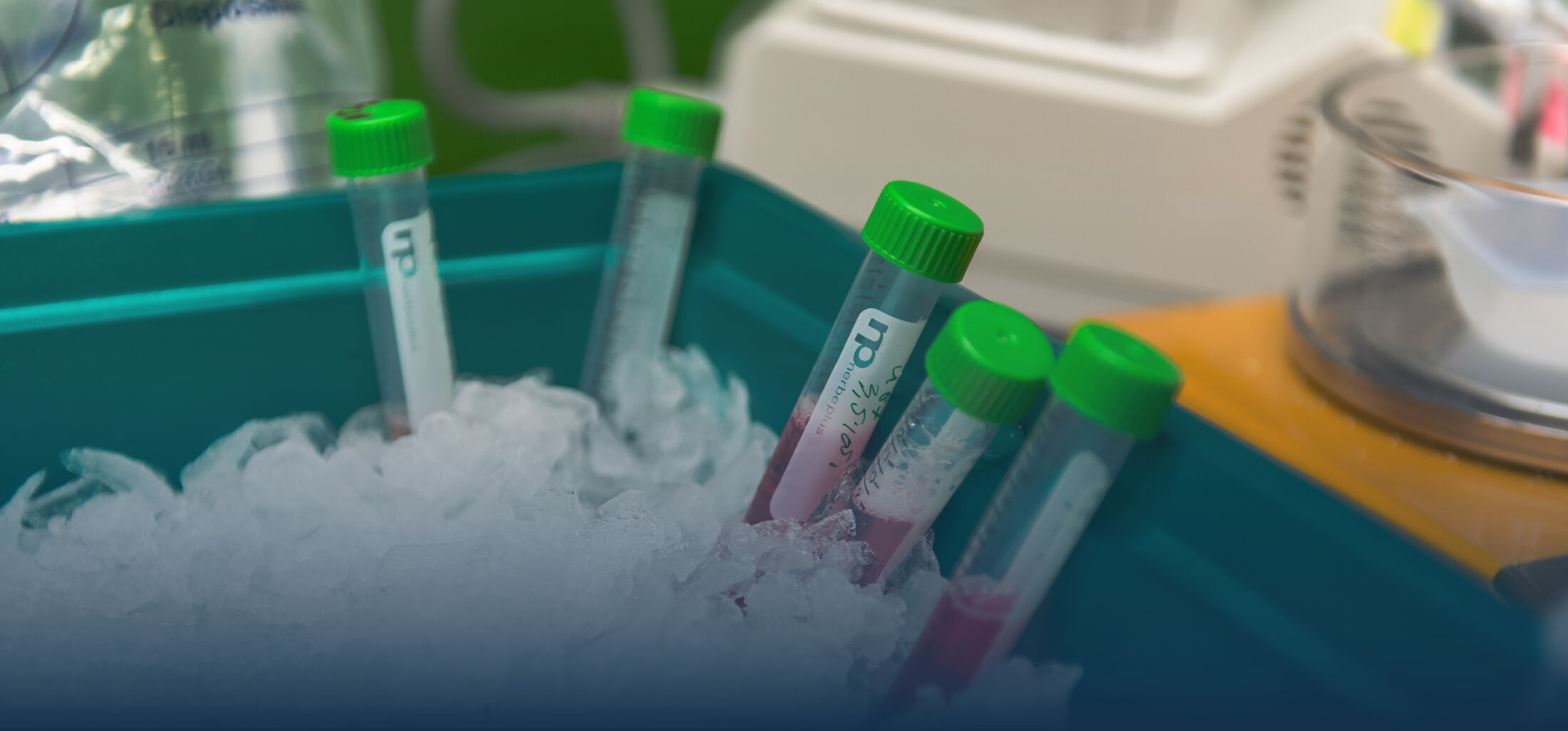AG Liedtke
Hier finden Sie weitere Informationen zur AG Liedtke:
Prof. Dr. rer. nat. Christian Liedtke
Arbeitsgruppenleiter / Principal Investigator
cliedtkeukaachende
Tel.: 0241 80-89249
Dr. rer. nat. Christian Penners
Wissenschaftlicher Mitarbeiter / Senior Scientist
cpennersukaachende
Tel.: 0241 80-89200
Daniela Paffen
Chemisch-Technische Assistentin / Technician
dpaffenukaachende
Tel.: 0241 80-88857
M.Sc. Carina Kallen
Doktorandin / Ph.D. student
ckallenukaachende
Tel.: 0241 80-88857
M.Sc. Hannes Hatten
Doktorand / Ph.D. student
hhattenukaachende
Tel.: 0241 80-89200
B.Sc. Celine Brinkmann
Master student
cbrinkmannukaachende
Tel.: 0241 80-88857
Ehemalige Mitarbeiter/ former group members
Dr. rer. nat. Anna Verwaayen
M. Sc. Julia Otto
Ute Haas
Dr. rer. nat. Kerstin Rahn
Dr. med. Fengji Hao
M. Sc. Nadine Hoeltke
Prof. Dr. nat. med. Yulia A. Nevzorova
Dr. rer. nat. Roland Sonntag
Dr. rer. nat. Jörg-Martin Bangen
M. Sc. Alejandro Cornecho-Müller
Dr. rer. nat. Wei Hu
Dr. med. Hilga Zimmermann
Dr. rer. nat. Nives Moro
Dr. med. Anke Hofmann
Dr. rer. nat. Julia Freimuth
Unsere Forschungsgruppe interessiert sich für die Regulation von Zellzyklusmechanismen in Darm und Leber im Kontext von Homöostase und Erkrankungen, einschließlich akuter und chronischer Entzündungen, Fibrose und Krebs.
Im Zentrum unserer Forschung stehen die zellzyklus-regulatorischen Proteine Cyclin E1 und Cyclin E2 zusammen mit ihrer interagierenden Kinase CDK2.
In früheren Studien haben wir gezeigt, dass die Inaktivierung dieser Proteine mit genetischen Ansätzen unter gesunden Bedingungen bestenfalls geringe Auswirkungen hat. Wir haben jedoch nachgewiesen, dass die genetische Deletion des Ccne1 Gens (das für Cyclin E1 kodiert) vor zahlreichen Erkrankungen im Darm und in der Leber wie z.B. akuter Hepatitis und Kolitis, Leberfibrose und Leberkrebs, schützen kann.
Wir versuchen derzeit, die molekularen Mechanismen zu entschlüsseln, die diesen spannenden Erkenntnissen zugrunde liegen. Aspekte unserer aktuellen Forschung sind:
- Rolle von Cyclin E bei der Kontrolle der Darmbarriere und der Kolitis-Induktion (beteiligte Wissenschaftler: H. Hatten und C. Penners)
- Entwicklung von Strategien, zur Modulation/Inhibition von Cyclin E1 in Leberkrebszellen (beteiligte Wissenschaftlerin: C. Kallen)
- Analyse von Cyclin E1-abhängigen Interaktomen in Hepatozyten, Myofibroblasten und Krebszellen (beteiligte Wissenschaftlerin: C. Brinkmann)
- Rolle von Cyclin E in der Mastzellbiologie (beteiligter Wissenschaftler: C. Penners)
Our research group is interested in the investigation of cell cycle regulatory mechanisms in gut and liver in the context of homeostasis and disease including acute and chronic inflammation, fibrosis and cancer.
In the center of our research are the cell cycle regulatory proteins Cyclin E1 and Cyclin E2 together with their interacting kinase CDK2.
In previous studies we have shown that inactivation of these proteins using genetic approaches has at best minor effects under healthy conditions. However, we have demonstrated that genetic deletion of the Ccne1 gene (encoding Cyclin E1) may protect from multiple disease in gut and liver such as acute hepatitis and colitis, liver fibrosis and liver cancer.
We are currently trying to decipher the molecular mechanisms underlying these exciting findings. Aspects of our current research are:
Role of Cyclin E for controlling intestinal barrier and colitis induction (involved scientists: H. Hatten and C. Penners)
Development of strategies to target Cyclin E1 in hepatic cancer cells (involved scientist: C. Kallen)
Analysis of Cyclin E1-related interactomes in hepatocytes, myofibroblasts and cancer cells (involved scientist: C. Brinkmann)
Role of Cyclin E in mast cell biology (involved scientist: C. Penners)
For further details please refer to:
Homepage of SFB/CRC1382 of German Research Foundation, project A02
(Link: www.crc1382.org/a02/)
Homepage of German Research Foundation, projects of C. Liedtke
(Link: gepris.dfg.de/gepris/person/1822873)
Homepage SFB/TRR57 of German Research Foundation (terminated)
(Link: sfbtrr57.de/projekte/p04/index.html)
Our research group is a member of the Collaborative Research Center CRC 1382 "Gut-Liver Axis" (Spokesperson: Prof. Oliver Pabst) and is working on project A02.
Furthermore, we participate with a project and a PhD student in the Graduate School RTG 2375 "Tumor-Targeted Drug Delivery" (Spokespersons: Profs. Fabian Kiessling and Twan Lammers).
In addition, the German Research Foundation is funding us with two individual projects.
In summary, our group is currently supported as follows:
- C. Liedtke: „Tissue Regeneration as a critical component of gut-liver homeostasis” DFG, Collaborative Research Center (CRC) 1382 “Gut-Liver Axis”, project A02.
- “Targeting Cyclin E with siRNA-NP for Liver Cancer Therapy” DFG, GRK 2375, “Tumor-Targeted Drug Delivery”, Project P3. Supported Ph.D. student: C. Kallen; PI: C. Liedtke; Spokespersons: F. Kiessling & T. Lammers.
- C. Liedtke: “Treatment of hepatocellular carcinoma by directed inhibition of the cell cycle mediators Cyclin E1 and Cdk2 in mouse models”. DFG, LI1045 4/2.
- Liedtke, C. (Together with M. Huber, R. Weiskirchen, S. Meurer): “Mechanisms controlling pro-inflammatory mast cell functions and implications for chronic liver disease and cancer DFG, LI1045 6/1.
Wir bieten regelmäßig spannende Projekte für Abschlussarbeiten aus den Bereichen der molekularen Hepatologie/ Gastroenterologie/ Tumorbiologie an.
Falls Sie daran Interesse haben und unsere Arbeitsgruppe kennenlernen möchten, schicken Sie uns gerne eine E-Mail an cliedtkeukaachende (Prof. Christian Liedtke) oder cpennersukaachende (Dr. Christian Penners). Wir freuen uns auf Ihre Anfrage.
We regularly offer exciting projects for master theses / MD thesis in the fields of molecular hepatology, gastroenterology, and tumor biology.
If you are interested and would like to get to know our working group, please send us an email to cliedtkeukaachende (Prof. Christian Liedtke) or cpennersukaachende (Dr. Christian Penners). We look forward to your inquiry.


